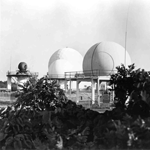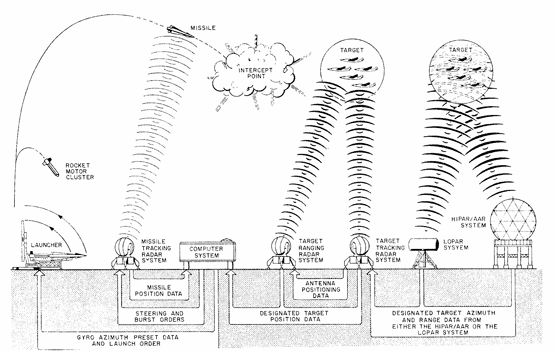
U.S. Army in the collection of NPS/Gateway NRA Cold War Defenses Anti-Aircraft gun batteries were first constructed at the end of World War I. During World War II it became clear that the viable threat to the U.S. coast was from the air, and no longer from the sea. Anti-Aircraft batteries numbers increased and coastal gun positions were removed. After World War II ended, the Coast Artillery was abolished. Anti-aircraft guns were now the only defenders of the coastlines. These weapons stood ready during the Korean War, but they could only shot down propellered airplanes. Jet fighters flew higher and faster. This lead to the development of the Nike Air Defense Missile. Nike Missiles From 1954 until 1974, during the height of the Cold War, Nike Missiles guarded the New York area. The missiles were able to intercept long range Soviet Bear Bombers and destroy them while still over the ocean. Nineteen Nike Missile sites ringed New York City. Two of the missile sites and the Headquarters unit were located in what is now Gateway NRA. Fort Hancock (NY-56) and Fort Tilden (NY-49) operated from 1954 to 1974, while Fort Wadsworth was the Headquarters of the 52nd Anti-Aircraft Brigade from 1954 to 1960. Soldiers assigned to the Nike Missile defenses worked in one of two locations within a site. They worked at the Missile Launch Area or the radar area, known as the Integrated Fire Control Area (IFC). These soldiers lived at these locations in ready barracks when they were on 24-hour duty shifts. Fort Tilden and Fort Hancock were both considered double battery sites as they each had two missile batteries. Each battery had two underground storage rooms for a total of 4 magazines at each site. Each magazine room had a large elevator that raised and lowered missiles. The IFC had three types of radar. The first, called Acquisition Radar located the enemy target. Target Tracking Radar then followed the target. The third radar type was Missile Tracking Radar that would follow and guide the Nike to destroy the target. Nike batteries were part of ARADCOM, the U.S. Army Air Defense Command. Placed strategically near cities throughout the country to prevent, “destruction of the centers of America’s great retaliatory and productive might,” the batteries defended against Soviet aggression. The first Nike Missile developed was the Ajax. This missile could fire and destroy a target at 30 miles. By 1958, the Hercules began replacing the Ajax. This larger missile had a range of over 96 miles and was designed to carry a nuclear warhead. In 1974, all remaining Nike batteries were disarmed in compliance with the SALT treaty signed with the Soviet Union. Also, the arms race’s newest weapon, the Intercontinental Ballistic Missile (ICBM) made them obsolete. For more information on Fort Hancock during the Cold War, click here. For more information on Fort Tilden during the Cold War, click here. 
U.S. Army |
Last updated: February 26, 2015
